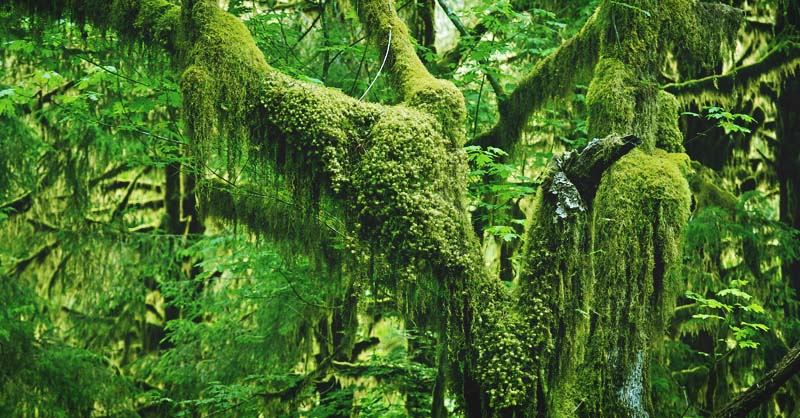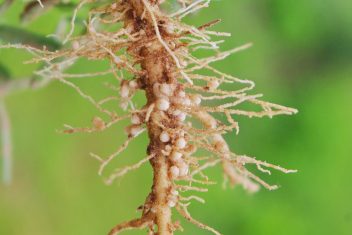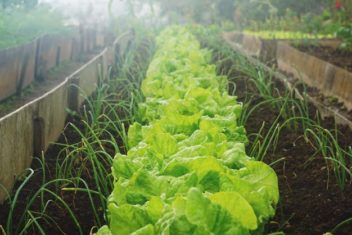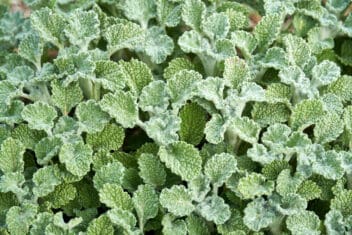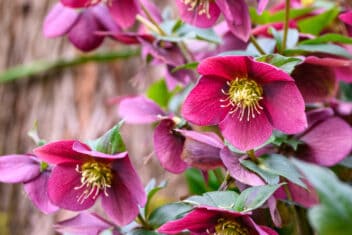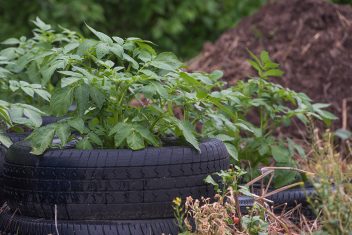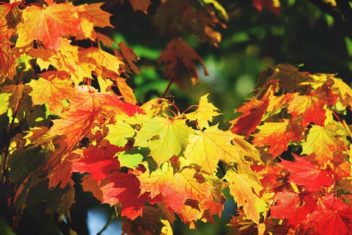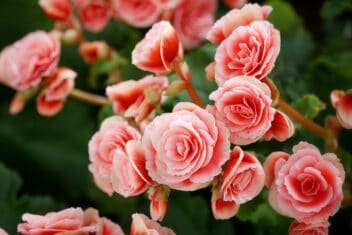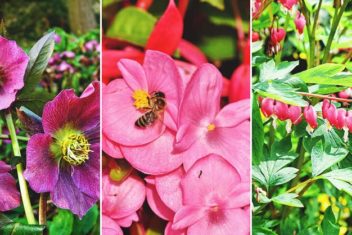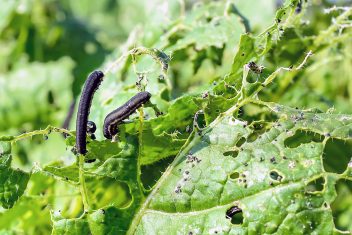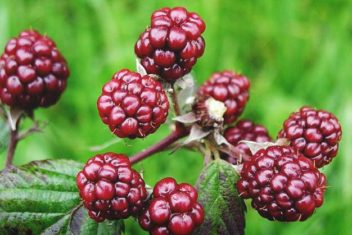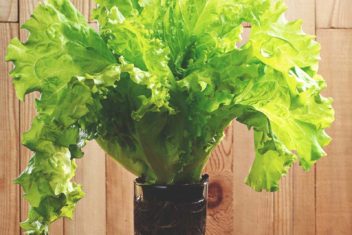I’ve always been fascinated by moss. The way it grows close to the ground and in clumps or mats is so unlike anything else. I’ve always felt drawn to gardens that utilize moss, and finding it growing wild feels like a treat. Mosses grow nearly anywhere, and there are so many different types of moss, it’s easy to stumble upon this type of plant life.
The popularity of moss in gardening first began in Japanese gardens, and today, it’s a popular choice for rock gardens and ground cover. Because most moss spreads in a carpeted fashion and is low maintenance, it’s an excellent alternative to grass when you want something green.
If you’re as enamored as I am with moss, you’ve probably considered using it in your own garden. It can seem daunting since it doesn’t grow like a typical rooted plant, and there are so many varieties to pick from. Don’t be discouraged. We’ll help you pick the perfect type of moss for your space.
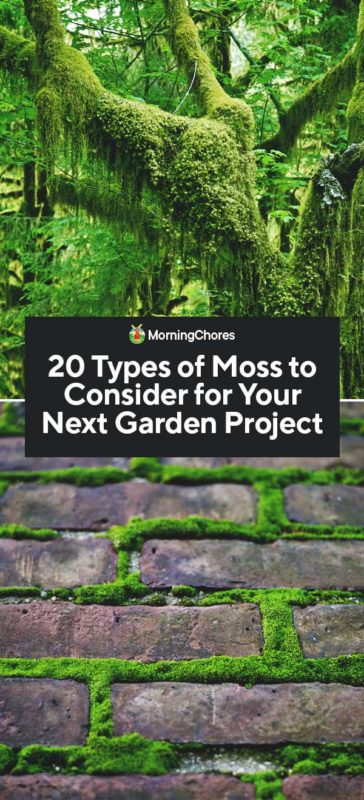
What is Moss?
Moss is a flowerless type of greenery without roots. It’s low-growing and often – but not always – thrives in moist areas. Typically, it spreads via spores. There are over 10,000 species of moss so we won’t cover all of them here, but there’s a moss variety suitable for your needs.
Moss has been around for a long time. It was one of the earliest plants to emerge on land 540 million years ago, along with algae and mushrooms.
Why Moss?
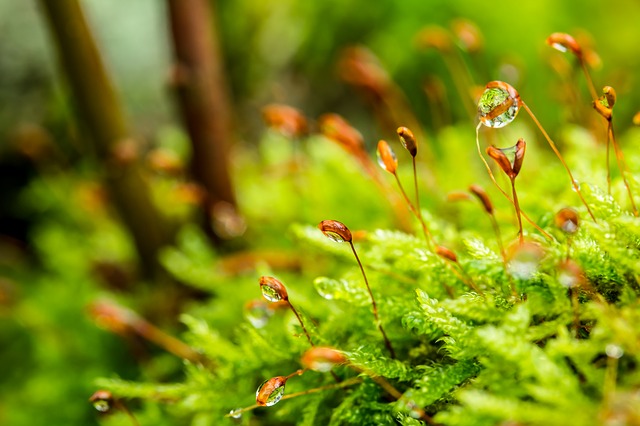
What’s the point of using moss? First of all, it’s an attractive low-lying garden plant that helps fill in bare spots in a rock garden or spaces between stepping stones. Second, it’s low maintenance and can even grow on rocks, depending on the variety.
Moss is beautiful as a filler in floral arrangements. It’s also often used in decorative terrariums and to retain soil moisture in indoor and outdoor planters.
Peat moss, in particular, is used in gardening and agriculture because of its moisture retention qualities. If you’re thinking about using peat moss, read up on the pros and cons of using it.
Mosses work as a lawn substitute in areas where the weather and conditions are right. If you’re tired of mowing your lawn, a moss might be the answer to your problems. Pick the right, quick-spreading option, and you’ll never need to mow again.
Moss is also often used in green roof designs because of its capability to tolerate drought and absorb water. Moss requires little feeding and is overall a low maintenance type of greenery, which makes it an excellent option for those who don’t want to spend a lot of time dealing with upkeep.
Is Moss a Weed?

If you’re trying to grow a perfect green lawn, you may not be too happy when moss creeps into the picture. But I wouldn’t classify it as a weed. Most types of moss don’t do well in competition with other plant species, and few species of moss are considered invasive.
A downside of moss? In seed starting, moss can hinder growth. The key to prevent moss proliferation in a nursery setting is to encourage drainage and avoid overwatering. A low pH may also promote moss growth.
Is there any reason I might not want moss in my yard or around my home?
Nope, it’s harmless. Even the spores don’t pose any danger to humans. Because moss is attracted to moisture, however, you may want to investigate further if it’s growing close to your home without any effort on your part.
Types of Moss
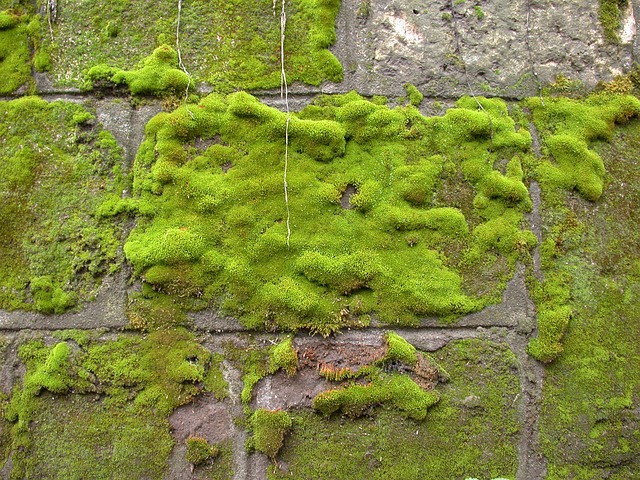
When talking about the types of moss out there, there are two main classes. Pleurocarpous are quick-growing mosses with a creeping habit. They’re the best type of mosses for rock gardens because they’re able to attach themselves to hard surfaces and they’re low-growing. Acrocarpous mosses grow upright and grow in mounds rather than in carpets. They’re slower growing than pleurocarpous varieties.
Here are 20 types of moss to consider for your next garden project.
1. Common Haircap
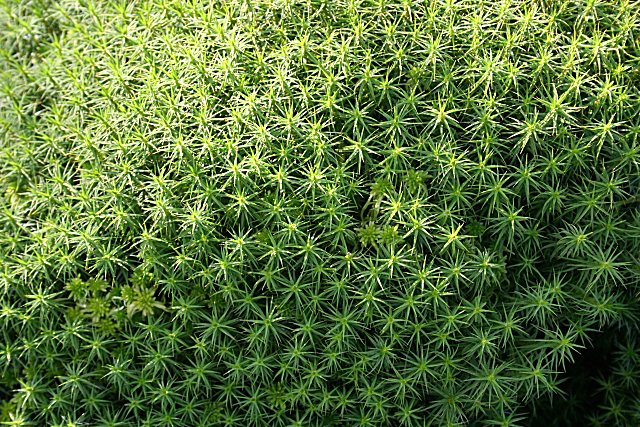
Scientific name: Polytrichum commune
Type: Acrocarpous
Characteristics: A frilly bright green moss that’s capable of growing up to 16 inches tall. This moss looks like a sea of mini evergreens. It grows almost anywhere, in USDA zones 2-15. It’s particularly good as a lawn replacement or between pavers.
2. Fern Moss
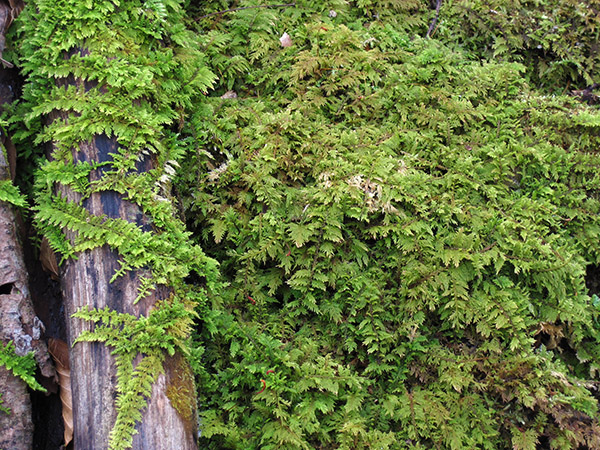
Scientific name: Thuidium delecatulum
Type: Pleurocarpous
Characteristics: Also known as log moss, this variety grows quite fast and is capable of growing on rocks. In its dried form, it’s often used by florists in floral arrangements. It’s a particularly easy-to-grow variety, and stunning in the garden thanks to its vibrant green color and velvety texture.
3. Heath Star Moss
Scientific name: Campylopus introflexus
Type: Acrocarpous
Characteristics: Native to areas of South America, this type of moss features leaves with a star-like appearance. Watch out, while pretty, this moss is considered invasive as it spreads quickly. It’s unlikely, however, to spread as quickly as a ‘weed’ might.
4. Baby Tooth Moss
Scientific name: Plagiomnium cuspidatum
Type: Pleurocarpous
Characteristics: Named for its sharp-toothed leaves, this moss prefers cooler weather and partial shade. It can grow in everything from clay to sand and even on rock surfaces. The leaves have an almost transparent appearance and look succulent-like.
5. Pincushion Moss
Scientific name: Luecobryum glaucum
Type: Acrocarpous
Characteristics: There’s a reason for its name! It looks much like a pin cushion. The tight little mound of moss could easily act as a resting place for sewing implements. The foliage of this type of moss is blueish green. It grows between 1 to 4 inches tall and can spread up to 20 inches in diameter.
6. American Tree Moss
Scientific name: Climacium americanum
Common name: American tree moss
Type: Pleurocarpous
Characteristics: This moss gets its name not because it tends to grow on trees but because the little clumps resemble a forest of trees. Older mounds may grow up to 5-inches in height. Suitable for semi-shaded locales.
7. Mood Moss
Scientific name: Dicranum scoparium
Type: Acrocarpous
Characteristics: A gorgeous bright green variety that has a quintessential moss-like appearance. Mood moss grows in mounds and is perfect for shady rock gardens. In areas with too much sun, the moss is likely to burn. Avoid placing it in extremely moist areas. Unfortunately, despite its groovy name, mood moss doesn’t change colors like a mood ring.
8. Shiny Seductive Moss
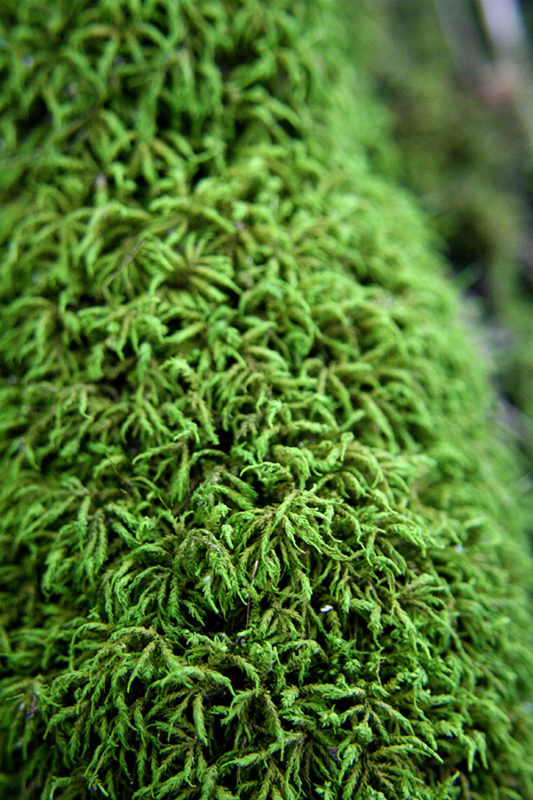
Scientific name: Entodon seductrix
Also known as: Shiny sexy moss
Type: Pleurocarpous
Characteristics: A moss with an odd name that grows close to the ground and spreads rapidly. Great for establishing cover for green roofs or bare rock gardens. Unlike many types of moss, this one loves the full sun.
9. Plume Moss
Scientific name: Ptilium crista-castrensis
Type: Pleurocarpous
Characteristics: Feather-like in appearance this type of moss grows in patches and features leaves under 1-inch long. It’s particularly pretty as a decorative element in indoor plants.
10. Spoon-Leaved Moss
Scientific name: Bryandersonia illecebra
Type: Pleurocarpous
Characteristics: Has a low-growing cushion-like habit and features long, odd-shaped cylindrical foliage. This type of moss offers a vital habitat for different amphibians. It’s a long-lived moss that prefers humus-rich soil.
11. Ribbed Bog Moss
Scientific name: Aulacomnium palustre
Type: Acrocarpous
Characteristics: Leaves of this moss may feature a yellowish tinge and have a hairy appearance. Because the yellow leaves appear to be glowing yellow in some light, it has earned the nickname “glow moss.”
12. Hypnum Moss
Scientific name: Hypnum cupressiforme
Type: Pleurocarpous
Characteristics: This widespread moss exists everywhere on earth except for Antarctica. It’s highly tolerant of a variety of environments. It grows in clumps and looks a lot like a mini forest of Cyprus trees.
13. Common Peat Moss
Scientific name: Sphagnum centrale
Characteristics: Common peat moss is a variety that grows in swamps or bogs and features a yellow-green coloring. This type works well as a replacement for a lawn.
14. Feather Moss
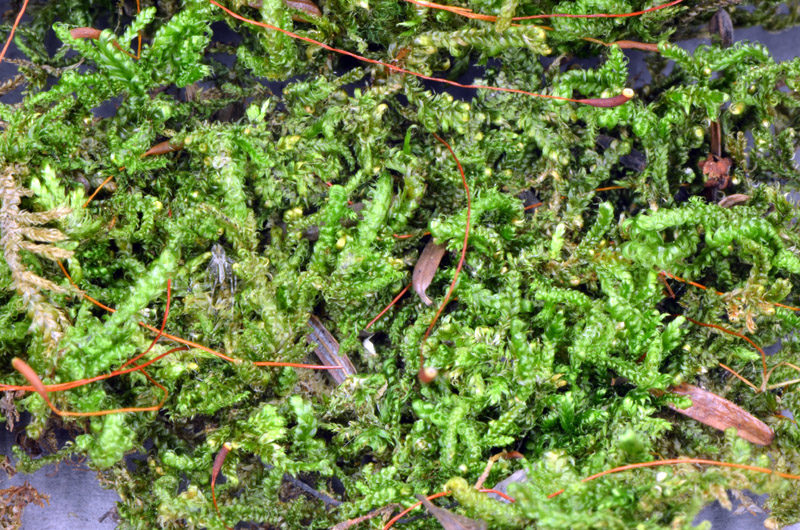
Scientific name: Hypnum imponens
Type Pleurocarpous
Characteristics: Feather moss is best grown in shade or part-shade and prefers acidic soil. Leaves are lime green in color but may vary between green to yellow. Feather moss is an ideal variety for rock gardens.
15. Juniper Moss
Scientific name: Polytrichum juniperinum
Type: Acrocarpous
Characteristics: Juniper moss has an upright growing habit and reaches up to 5 inches high. It’s found all over the world but prefers acidic soils and dry habitats.
16. Fire Moss
Scientific name: Ceratodon purpureus
Type: Acrocarpous
Characteristics: Another aptly named moss with green tips that give way to brownish reddish tinge closer to the ground. Fire moss grows in tufts. It’s also sometimes known as purple moss.
17. Shaggy Moss
Scientific name: Rhytidiadelphus triquetrus
Type: Pleurocarpous
Characteristics: Also known as electrified cat tail moss, this type of moss has a sprawling growth habit and features dark green foliage. Shaggy moss grows about 4-inches in height.
18. Sand Beauty
Scientific name: Racomitrium canescens
Type: Acrocarpous
Characteristics: Sand beauty is a low-growing moss that’s incredibly drought tolerant. When faced with a lack of water, this pretty moss changes to a paler green. It works well for shaded areas, too.
19. Warnstorf’s Peat Moss
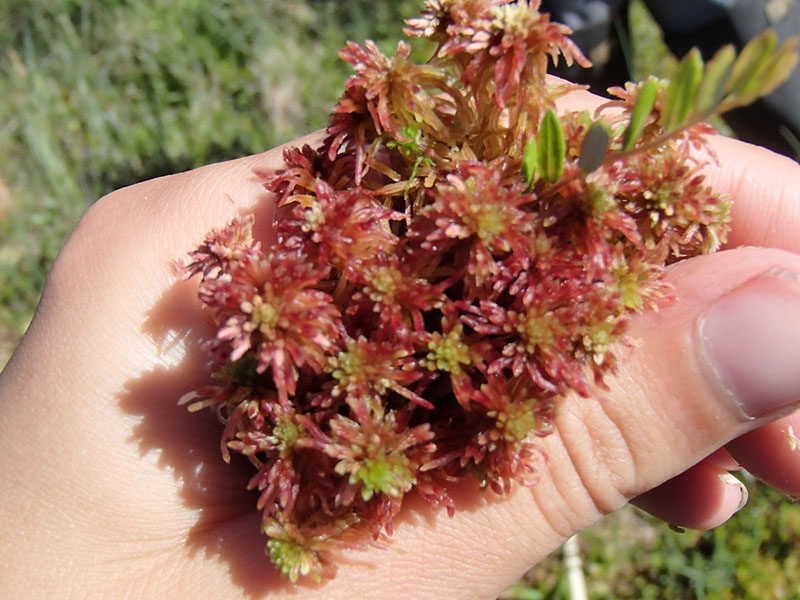
Scientific name: Sphagnum warnstorfii
Type: Pleurocarpous
Characteristics: A pretty moss with coloring that changes depending on the amount of sunlight it receives. In the sun, carpets of Warnstorf’s peat moss are a deep red. In the shade, the stems remain green. It grows close to the ground.
20. Tousled Treasure
Scientific name: Callicladium haldanianum
Type: Pleurocarpous
Characteristics: Tousled treasure is a wispy moss that does well in semi-shaded spots and is suitable for rock gardens. The low-growing moss may change color when exposed to sun, developing a reddish tinge.
Moss Imposters
There are plenty of non-mosses out there that are mistaken for the real deal. Plants that often get misidentified or mislabelled include lichens, hornworts, and liverworts. None of these are mosses.
Reindeer moss is actually a lichen, for instance. Spanish moss is another imposter that looks a lot like moss, has moss in its name, but isn’t actually a real moss.
For gardening purposes, however, even moss imposters have value and can be used to add texture and interest to rock gardens.
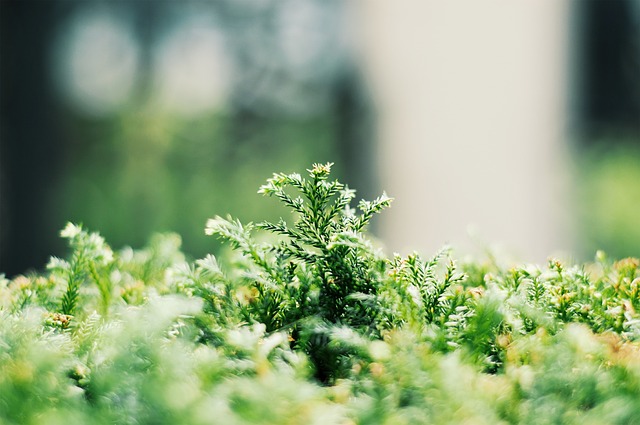
Thankfully, there are plenty of true moss types to choose from. Which type of moss did you settle on for your garden project? Did you find moss to be an attractive and helpful addition to your rock garden? Any tips you’d like to share with fellow gardeners? Share them in the comments section!

